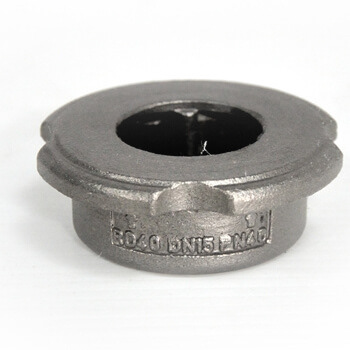
investment casting
Investment casting, also known as lost wax casting, is one of the oldest known metal-forming techniques. It is an industrial process that uses wax patterns to produce intricate parts with complex geometries. A wax pattern is created and then encased in a mold made of sand, shell or other material. The mold is heated in a furnace to melt away the wax pattern, leaving behind a hollow cavity in the shape of the desired part. Molten metal is poured into this cavity and allowed to cool and solidify before being removed from the mold. Investment casting can produce extremely precise components with fine detail that would be difficult or impossible using other manufacturing processes.
This metal casting process uses a wax casting that is coated in sand and then melted away to create a highly accurate final product. Similar manufacturing processes, such as sand and lost wax casting, also use this technique of forming precision metal parts. Investment casting is commonly used with aluminum, stainless steel, and other metals that require high accuracy components. The advantages of this process include the ability to produce highly detailed castings at low cost when compared to other similar manufacturing processes. The accuracy of investment casting also ensures that the final product meets tight tolerances for both form and fitment.
It is one of the best processes for manufacturing parts with complex geometries, internal passages, and other intricate designs. Investment casting is a manufacturing process used to produce metal parts from refractory materials. This process involves creating a wax replica of the desired part and then encasing it in a refractory material. The wax is then melted away leaving behind a cavity into which molten metal is poured. The resulting castings have exceptional surface qualities as well as precise detail that meet even the most stringent design requirements. This process can be applied to various applications such as aerospace components or medical instruments and can yield better results than secondary machine processes used on traditionally cast parts.
Investment casting is a manufacturing process in which parts are formed by using a metal die. The die casting process involves creating a wax replica of the desired part and building it up with multiple layers of wax. This replica is then encased in a ceramic slurry and heated until all the wax melts away, leaving an impression or “die cavity” in its place. Molten metal is poured into this die cavity to produce the desired part. Machines or manual tools can be used to cut or machine the part to meet higher precision standards as required.
Investment casting, also known as die casting, is a process by which molten metal is poured into a hardened tool steel die in order to create molds with cavities that become the desired shape when the metal hardens. This process begins with creating wax patterns of the desired shape, which are then dipped in refractory ceramic material to form a mold. The wax patterns are removed and replaced with molten ferrous alloys such as steel or iron. The molten metal is then poured into the ceramic mold and allowed to cool before being removed from the mold cavities. Investment casting produces components of greater accuracy than traditional die-casting processes, as it uses a more precise ceramic material for its molds instead of just sand or plaster like traditional methods.


